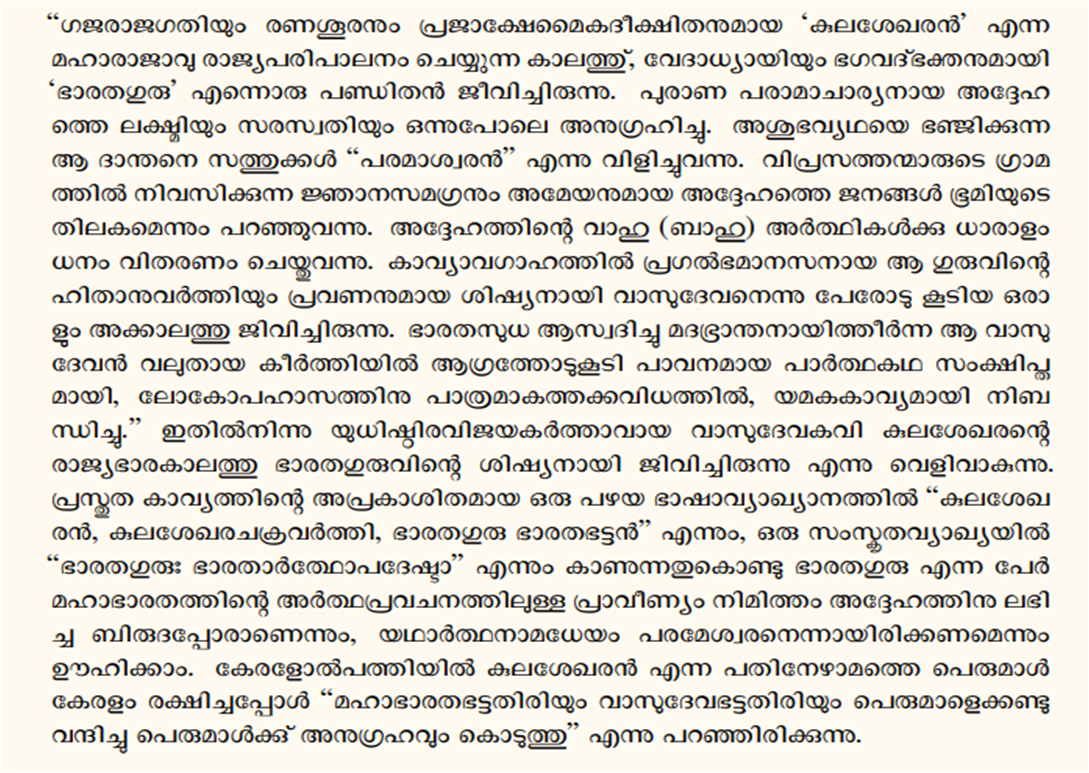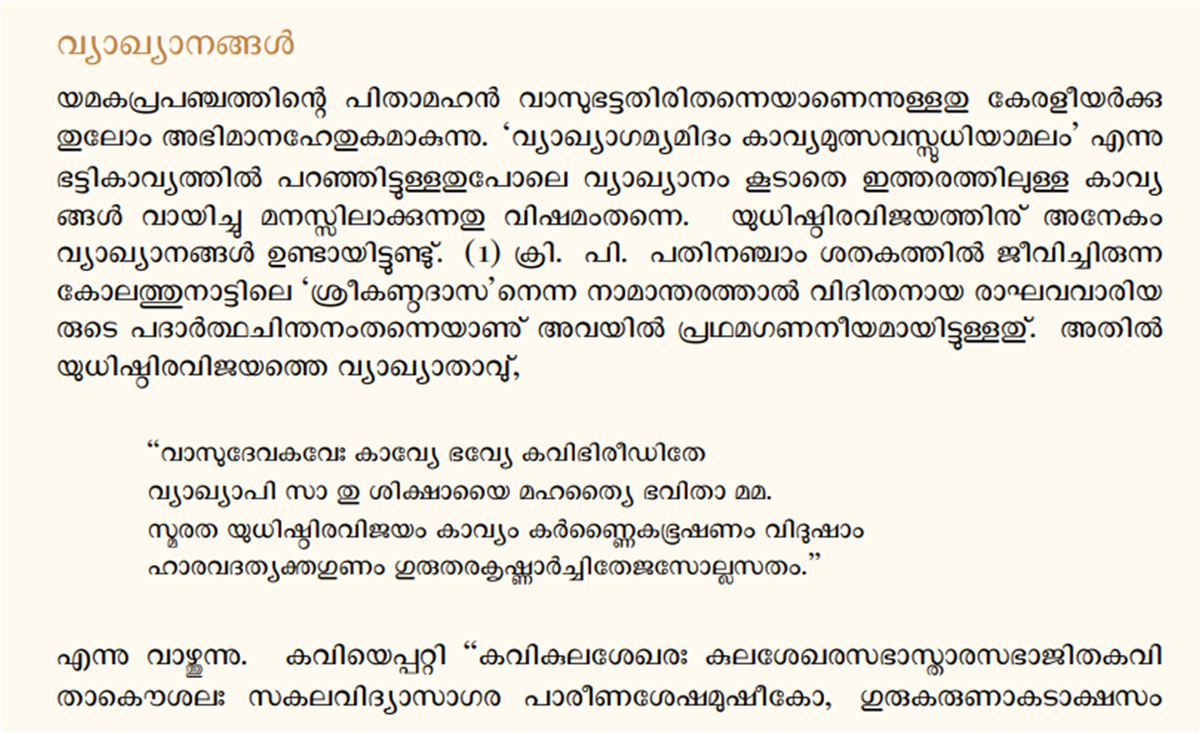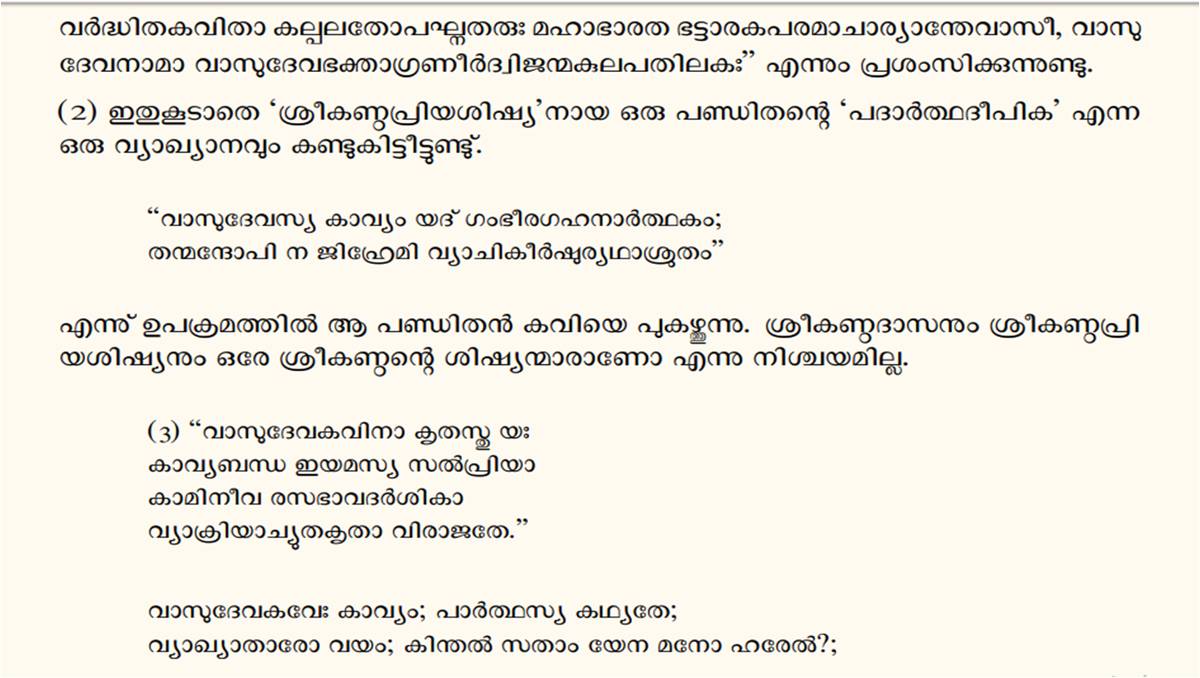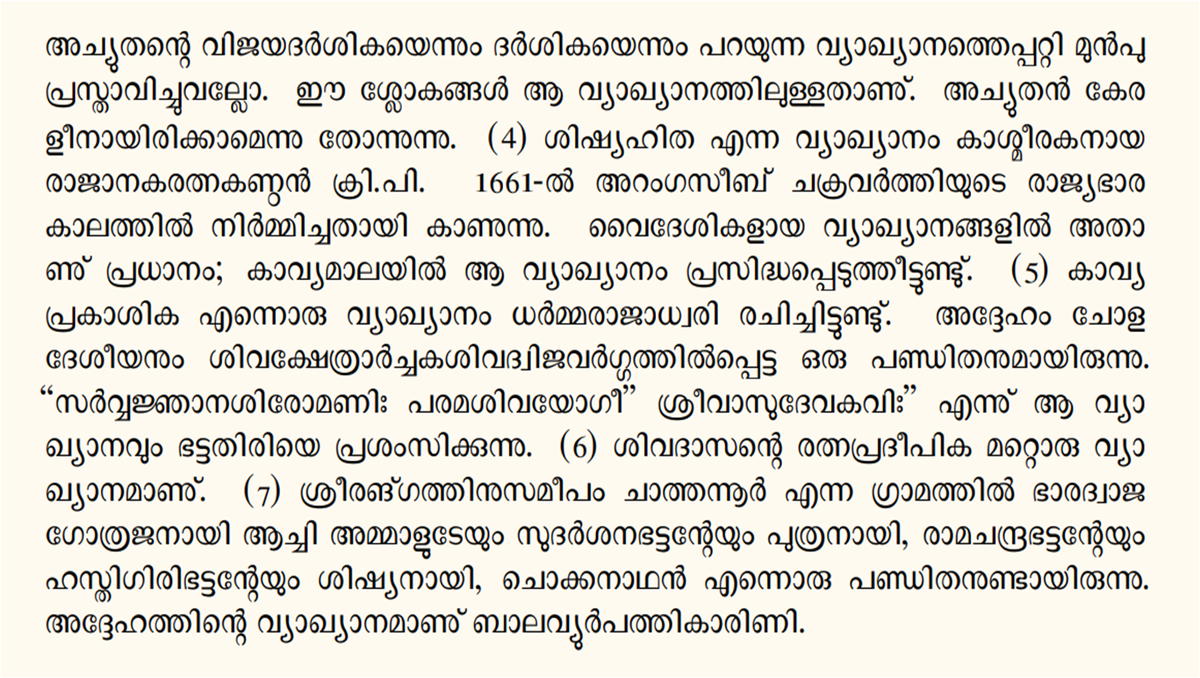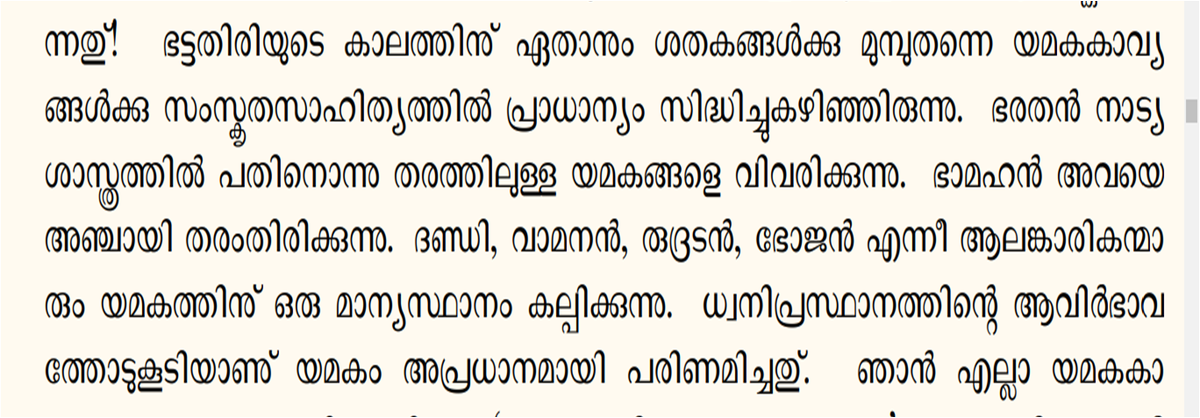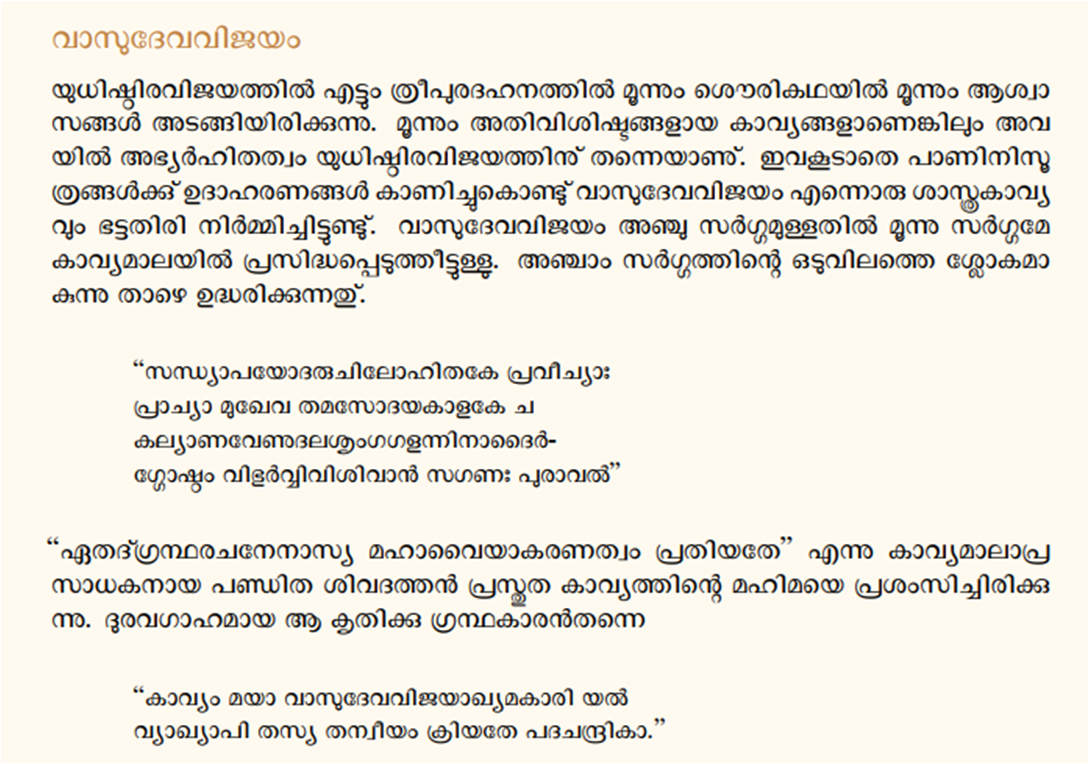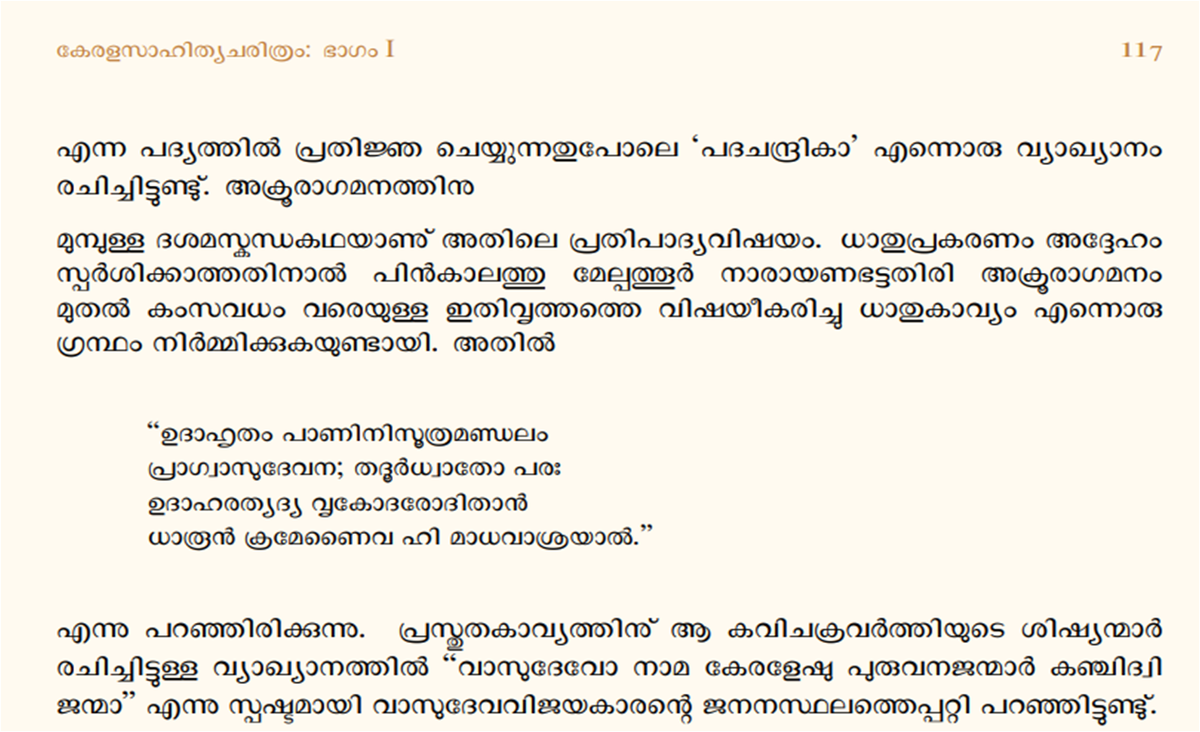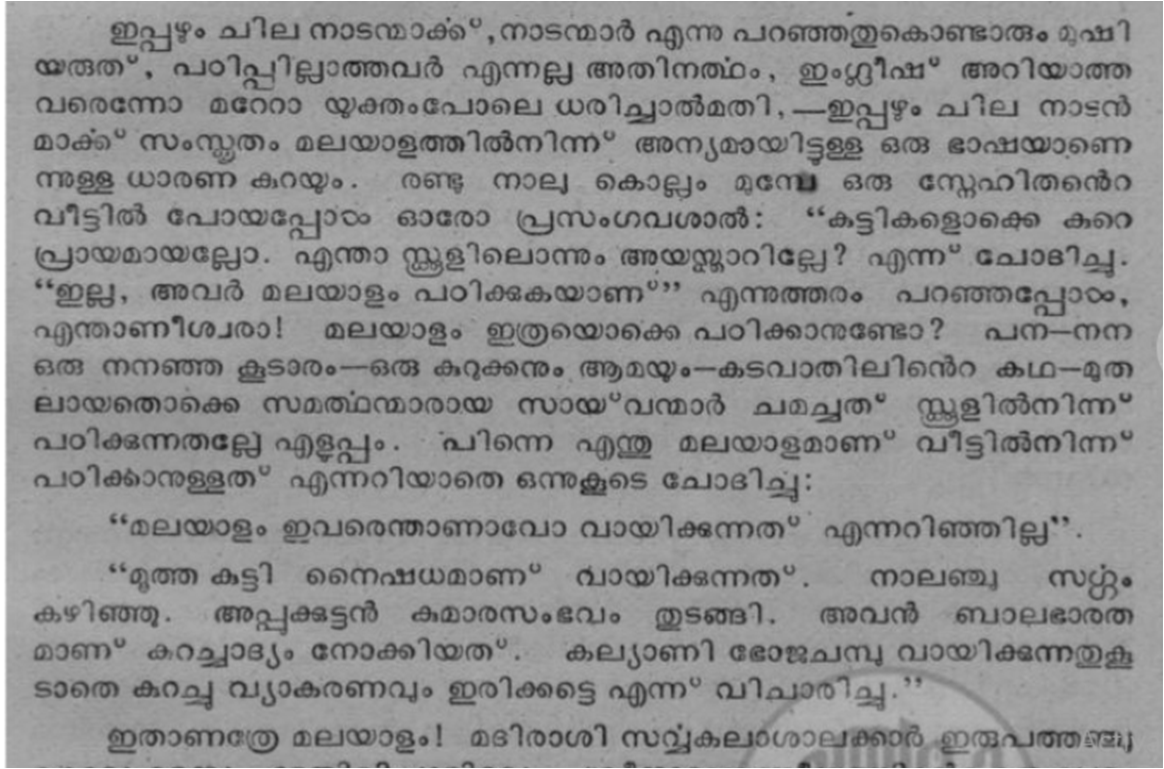Sriramodantam in Sanskrit is a condensed story of Rama based on Valmikiramayana.
This is in simple Sanskrit and was very popular in Kerala up to some 60 years
ago for beginners.
This is in simple Sanskrit and was very popular in Kerala up to some 60 years
ago for beginners.
1. https://archive.org/details/SriRamodantam_with_malayalam_translation
2.">https://archive.org/details/S... http://www.celextel.org/stotras/vishnu/ramodantam.html
3.">https://www.celextel.org/stotras/v... https://sanskritdocuments.org/doc_raama/rAmodantam.html?lang=sa">https://sanskritdocuments.org/doc_raama...
2.">https://archive.org/details/S... http://www.celextel.org/stotras/vishnu/ramodantam.html
3.">https://www.celextel.org/stotras/v... https://sanskritdocuments.org/doc_raama/rAmodantam.html?lang=sa">https://sanskritdocuments.org/doc_raama...
There are two opinion& #39;s on the name of author. Paremesvara Kavi is the first opinion. Second opinion considers it as written by woman from varier family of KolathuNadu in north kerala.
For centuries sanskrit education in kerala started with teaching Sri Ramodantam, once they have learned amarakosham and siddha rupam.
Sukumara Kavi composed a beautiful kavya, SriKrishna Vilasam in 12 cantos in a simple and delightful style. It describes the story of lord Krishna following the 10th Skanda of Srimad Bhagavatam.
In Kerala, Srikrishna Vilasam is normally taught after completion of Sri Ramodantam. Most keralites considers sukumara kavi as a keralite. Whether it is true or not, the popularity of srikrishna vilasam in kerala is unparalleled. Sri krishna vilsam inspired a lot of poets of
of kerala over many centuries.. Ramapani Varier& #39;s commentery known as Vilasini is very popular. SrikrishnaVilasm is an incomplete krithi. it abruptly stops at 12th Canto.
1. https://sanskritdocuments.org/doc_vishhnu/shrIkRiShNavilAsakAvyam.html?lang=sa
2.">https://sanskritdocuments.org/doc_vishh... https://archive.org/details/SrikrishnaVilasamOfSukumaraKaviWithTikaKSSSastri1928
3.">https://archive.org/details/S... https://ia801608.us.archive.org/18/items/in.ernet.dli.2015.406128/2015.406128.Shri-Kirshan.pdf">https://ia801608.us.archive.org/18/items/...
1. https://sanskritdocuments.org/doc_vishhnu/shrIkRiShNavilAsakAvyam.html?lang=sa
2.">https://sanskritdocuments.org/doc_vishh... https://archive.org/details/SrikrishnaVilasamOfSukumaraKaviWithTikaKSSSastri1928
3.">https://archive.org/details/S... https://ia801608.us.archive.org/18/items/in.ernet.dli.2015.406128/2015.406128.Shri-Kirshan.pdf">https://ia801608.us.archive.org/18/items/...
All the above links shows only upto 4th canto.
***Other print versions available :
1. English transl. and notes by K.P.A. Menon, Nag Publishers,1996, Nine Gems of Sanskrit literature vol. 1, (but without commentary known as Vilasini )
2 Rashritya Sanskrit Sansthan 8 cantos
***Other print versions available :
1. English transl. and notes by K.P.A. Menon, Nag Publishers,1996, Nine Gems of Sanskrit literature vol. 1, (but without commentary known as Vilasini )
2 Rashritya Sanskrit Sansthan 8 cantos
3 It seems that there is only one edition of the complete text in 12 sargas : by K. Jayammal (Ph.D. Thesis of the University of Madras, 1979, under K. Kunjunni Raja, see the latter 1958, p. 196-98, 1980 add. p. xiii), publ. by Higginbothams Ltd in 1982.
Pattathu Vasudeva Bhattathiri: He wrote Yudhishtira Vijayam and it is a reputed Yamaka Kavyam (Yamaka is a repetition in the same stanza in any part of it of words or syllables similar in sound, but different in meaning, a kind of rhyme.)
Vasudeva Bhattathiri is considered as a contemporary of king Kulashekhara Azhvar who wrote Mukundamala (AD 767-834) . Yudhishtira Vijayam is the third kavya normally learned by the students in Kerala. #page/n15/mode/2up">https://archive.org/stream/Kavya_Mala_Series_Of_Nirnaya_Sagar_Press/KavyamalaVol_60-YudhishthiravijayaOfVasudeva1930 #page/n15/mode/2up">https://archive.org/stream/Ka...
There is a very popular commentary for Yudhishtira Vijayam known as पदार्थचिन्तनम् written by Raghava Varier. The link in last tweet shows a commentary written by Rajanaka Ratnakantha, a Kashmiri pandit.
(food fo thought : In old kerala style sanskrit education within 5-6 years of education a student would have mastered amarakosham, siddha rupam, baala prabodhanam (grammar starter for kids), elementary grammar and the 3 kavyas.
Compare with our sanskrit teaching quality today )
Compare with our sanskrit teaching quality today )
Guru of Vasudeva Bhattathiri was Parameshwara who was better known by his title & #39;& #39;भारतभट्टः& #39;& #39; for his mastery over MahaBharata. Clearly you can see, why bhattathiri chose to write kavya based on mahabharata. (Book: Kerala Sahitya Chairtram : Ulloor S Parameshwara Iyer )
Vasudeva bhatathiri can be considered as the most celebrated kerala poet after Shankara Bhagavadpada and Lilasuka Bilvamngalam Swamiyar.
Commentaries : 1. Most well known commentary is Paadartha chinthanam of Raghva varier alias Sreekanda dasa.
Commentaries : 1. Most well known commentary is Paadartha chinthanam of Raghva varier alias Sreekanda dasa.
2. पदार्थदीपिका written by & #39;& #39;Sishya of sreekanda& #39;& #39;
3. Darshika of Achyutha
4. Sishyahita by Rajanaka Ratnakandha, a Kashmiri scholar
3. Darshika of Achyutha
4. Sishyahita by Rajanaka Ratnakandha, a Kashmiri scholar
5. Kavyaprakashika from dharmarajadhvari of chola desha.
6. Ratnapradeepika from Shivadasa
7. Commentary from Chokkanathan of srirangam known as balavyurpathikariNi
6. Ratnapradeepika from Shivadasa
7. Commentary from Chokkanathan of srirangam known as balavyurpathikariNi
Why is Yudhishtira Vijayam Important ? It is the foremost krithi among the YamakaKavyas of sanskrit. In natyashastra, 11 types of Yamaka& #39;s are described. Bhamaha has classified Yamaka& #39;s into 5 types. Scholars of alankara,
Dandi, Vamana, Rudrata, Bhoja etc has given
Dandi, Vamana, Rudrata, Bhoja etc has given
a lot of importance to Yamaka. Till the advent of & #39;dhvani prasthanam& #39; in 9th century, yamaka style of poetry was highly popular.
Ānandavardhana is credited with creating the dhvani theory. He wrote of dhvani (meaning sound, or resonance) in regard to the "soul of poetry." "When the poet writes," said Ānandavardhana, "he creates a resonant field of emotions."
Another very important kavya from Vaasudeva Bhattathiri is VasudevaVijayam. It is made to help people to understand PaNini sutra by giving examples for sutras. The story follows the dashama skanda of bhagavatha upto & #39;Akrura agamanam& #39;.
Many centuries later Melpathur Narayana Bhattathiri wrote Dhatukavya to explain the Dhatu prakaraNa. Melpathur starts from Akrura agamanam and ends with Kamsavadham. One an see how the teaching method influenced people over centuries. The continuity it created is amazing !
In addition to Yudhishtira vijayam & Vasudeva vijayam, the following krithi& #39;s of Vasudeva bhattathiri were also well known :
1 NaLOdayam
2 Gajendramoksham
3 Shouri Katha
4 Tripura Dahanam.
NaLodayam is so masterclass that some scholars even thought that it was a Kalidasakrithi
1 NaLOdayam
2 Gajendramoksham
3 Shouri Katha
4 Tripura Dahanam.
NaLodayam is so masterclass that some scholars even thought that it was a Kalidasakrithi
So far I explained the basic sanskrit education in Kerala, in the traditional method.
The sarcastic take on & #39;& #39;MalayaLam& #39;& #39; education in kerala ~125 years back by Vengayil Kunjiraman Nayanar.
Nayanar asked a friend are you sending kids to (english ) school ? He said No ! they are learning Malayalam. He further asked what exactly are they learning ? Then the reply came, Eldest one is learning Naishadham. https://twitter.com/jayarevathi/status/964155593496838144">https://twitter.com/jayarevat...
second one is learning Kumara Sambavam after finishing Baala Bharatham and the girl, Kalyani is learning Bhoja Champu and (sanskrit) VyakaraNam.
****
For last century ordinary keralite people & #39;& #39;Malayalam Education& #39;& #39; i.e. non-english eduaction= sanskrit education.
(Sorry cant
****
For last century ordinary keralite people & #39;& #39;Malayalam Education& #39;& #39; i.e. non-english eduaction= sanskrit education.
(Sorry cant
translate humour of Nayanar into english ! )

 Read on Twitter
Read on Twitter